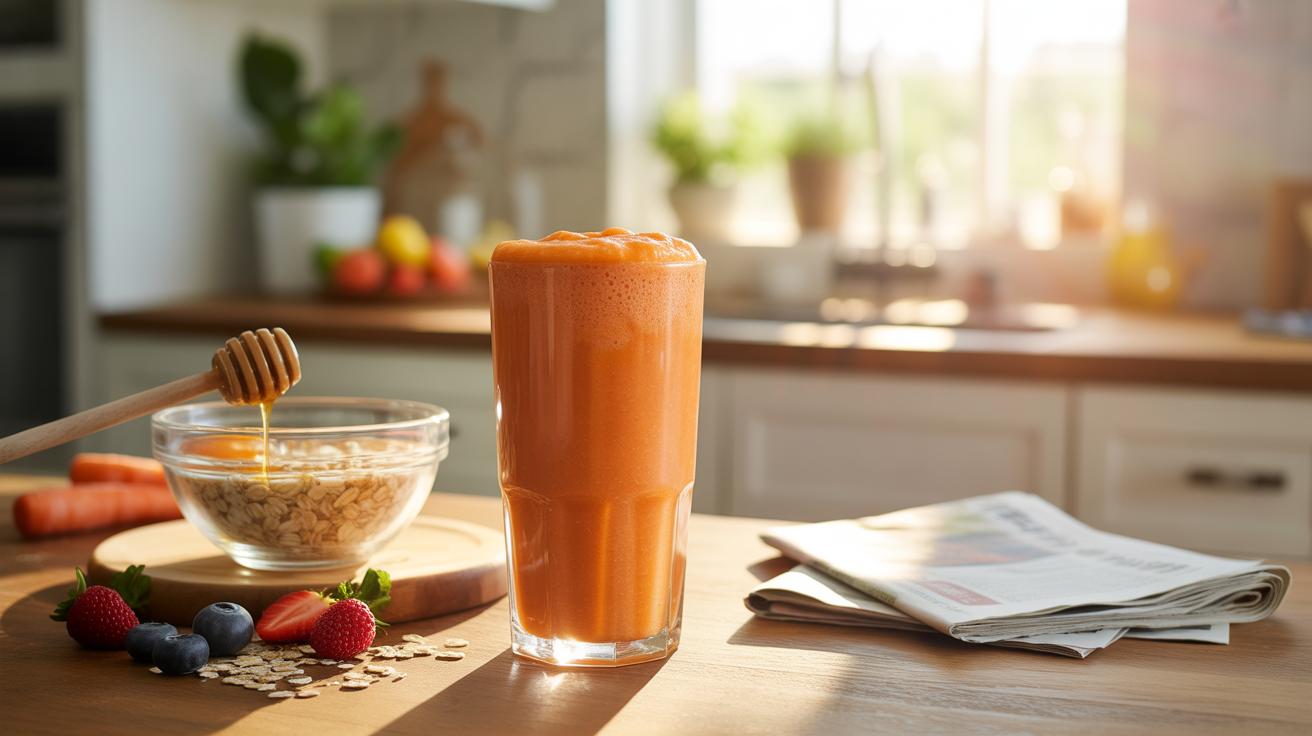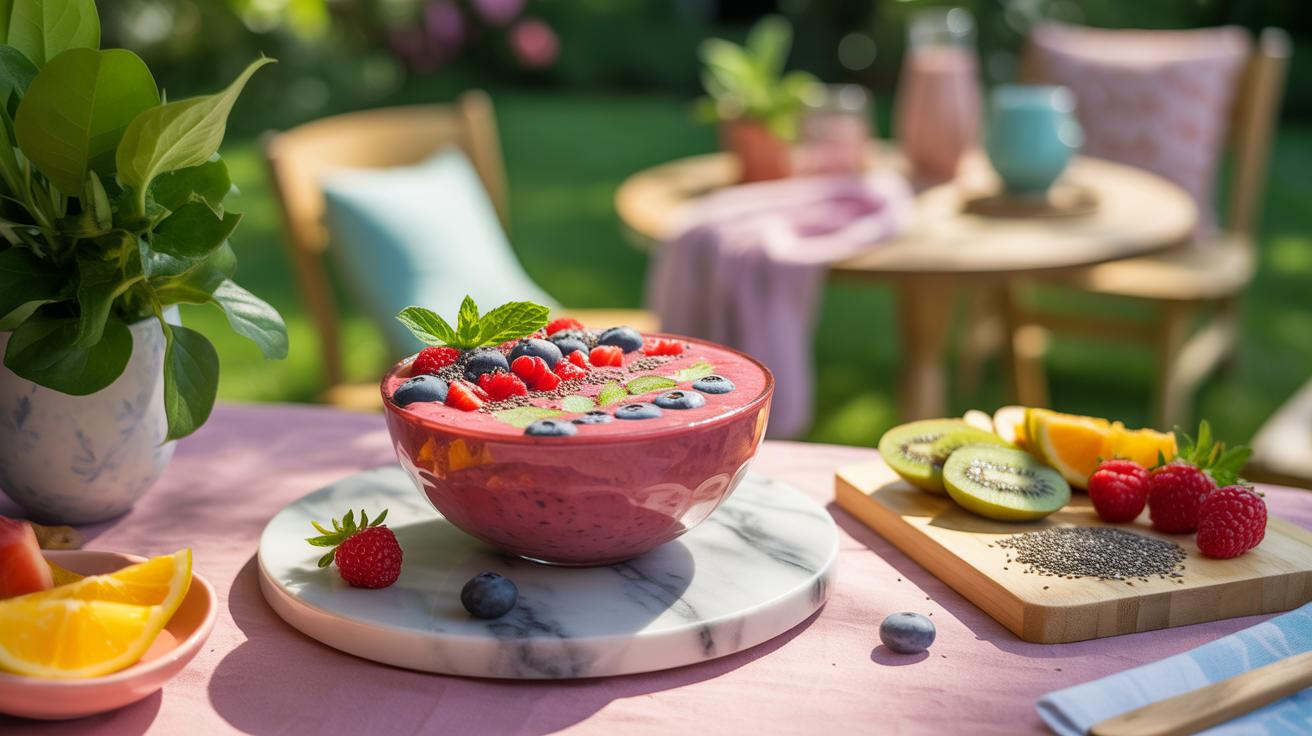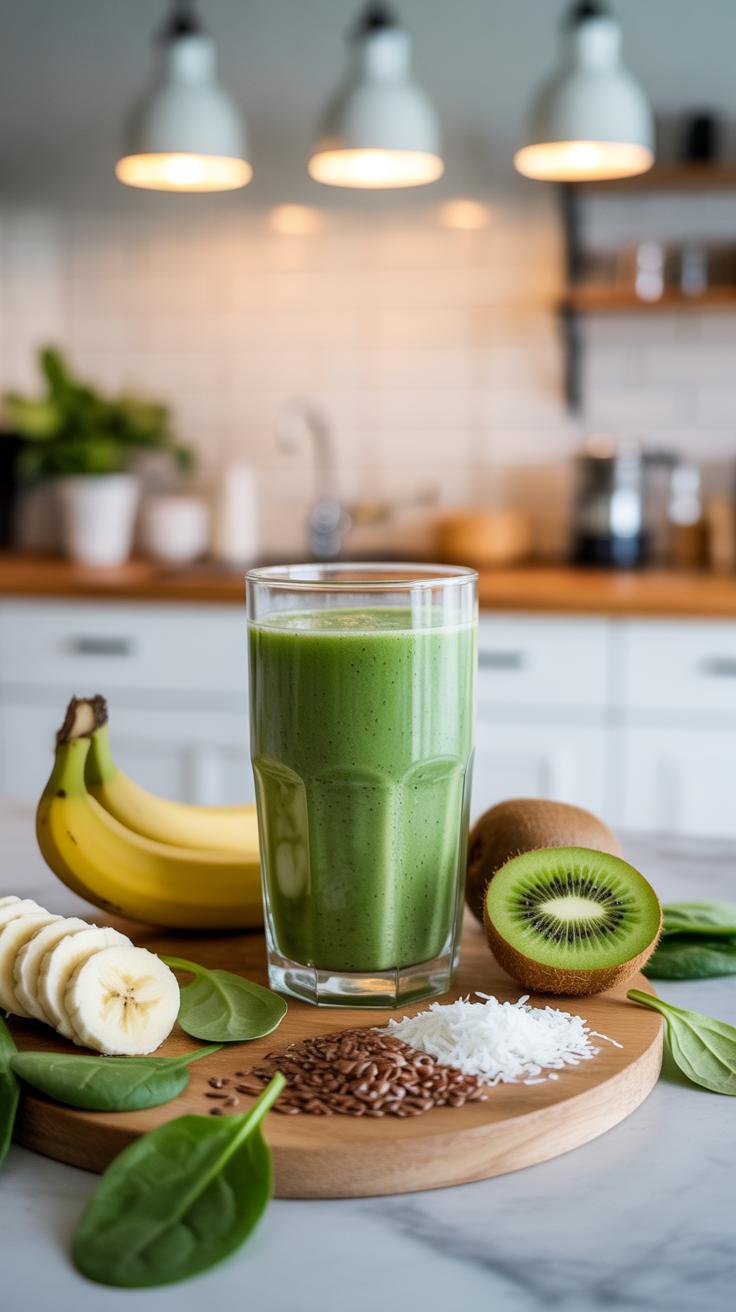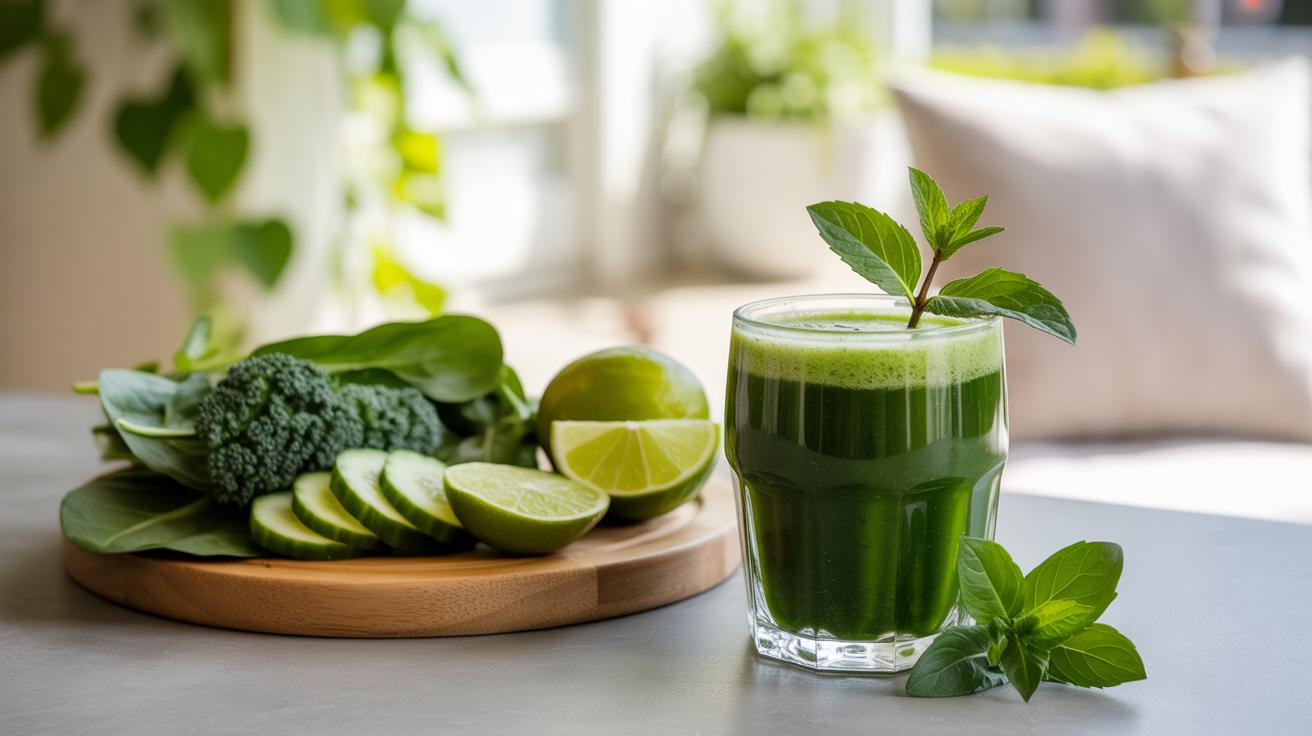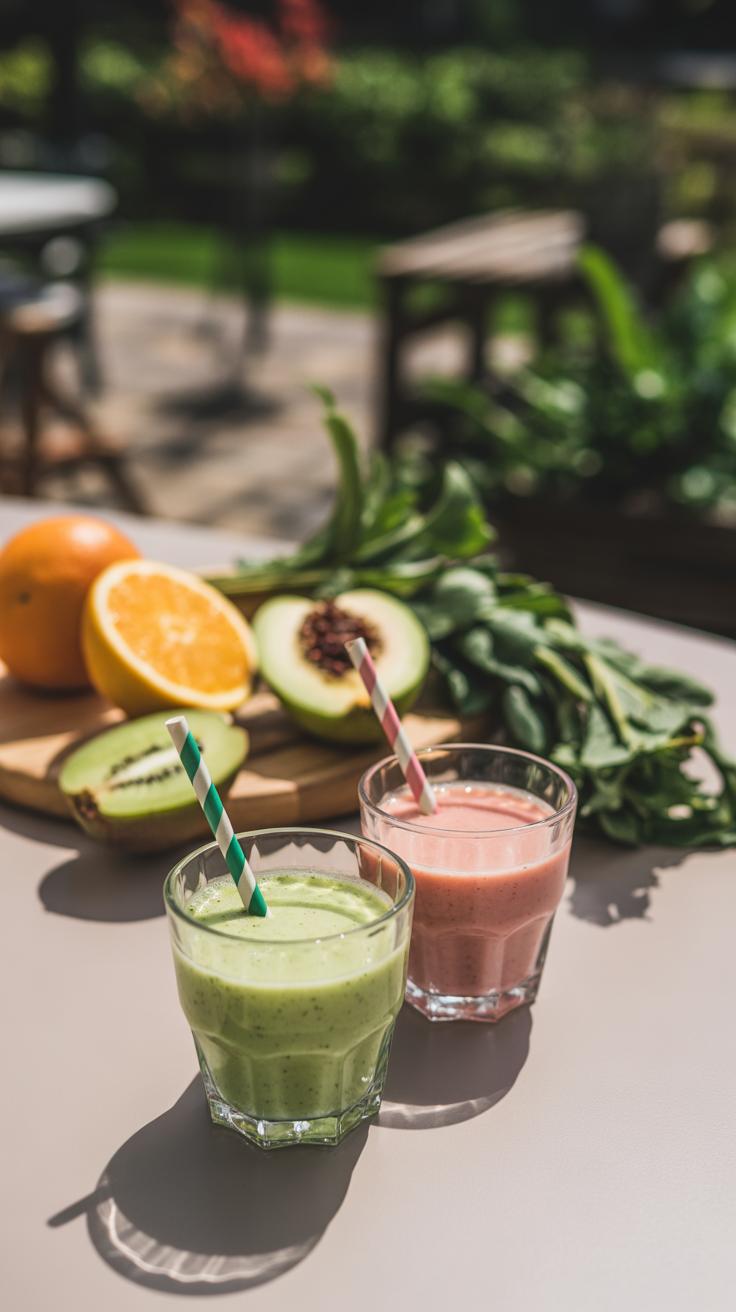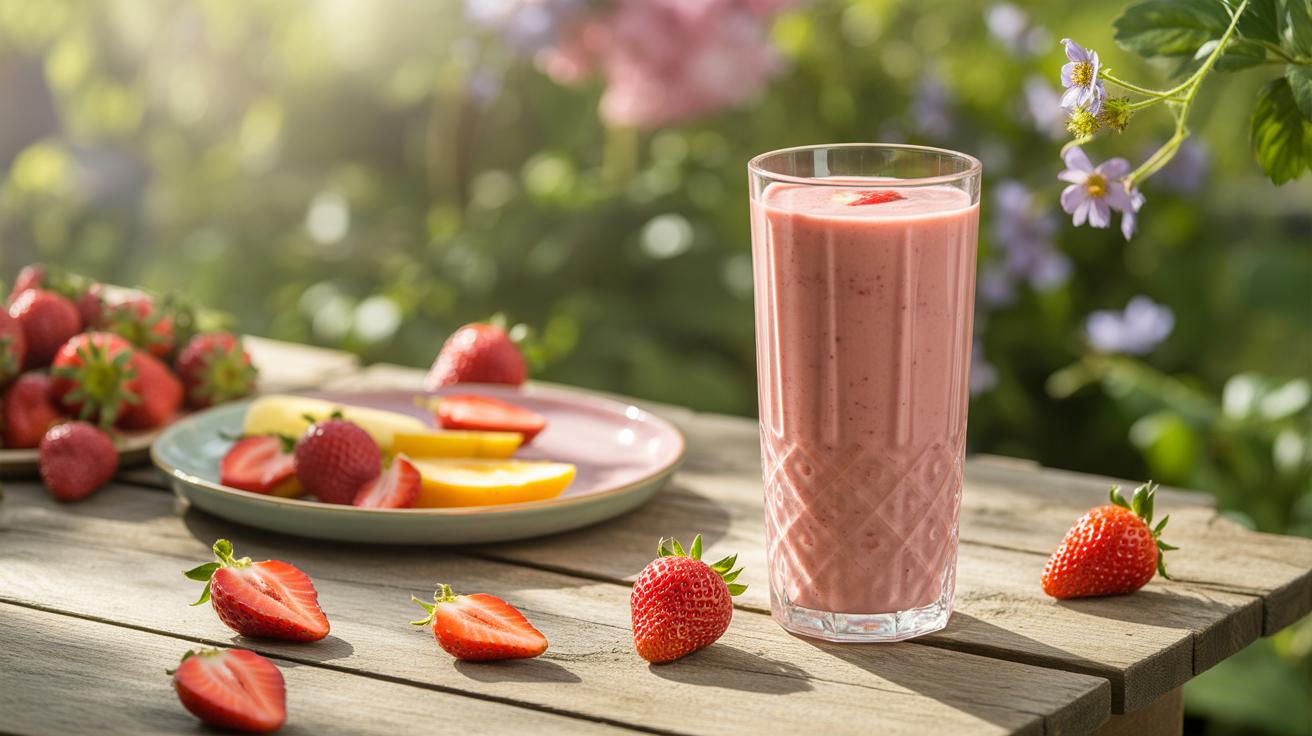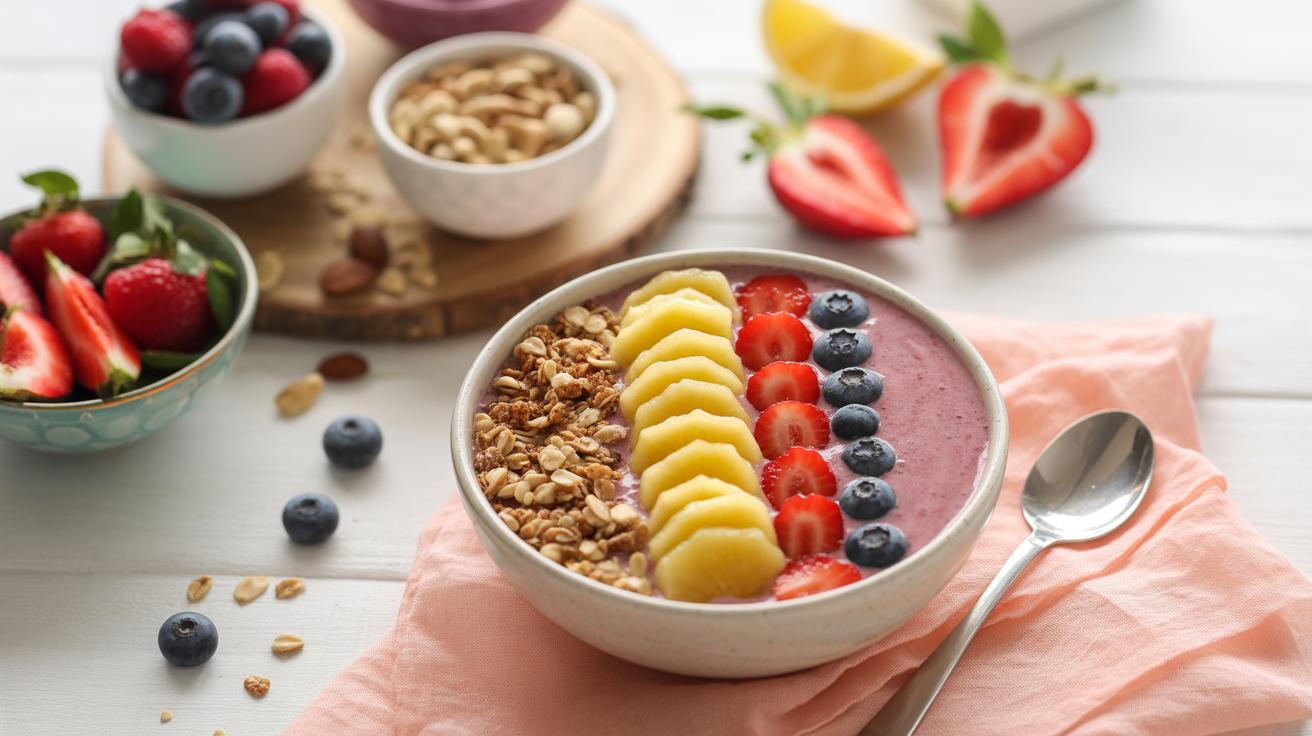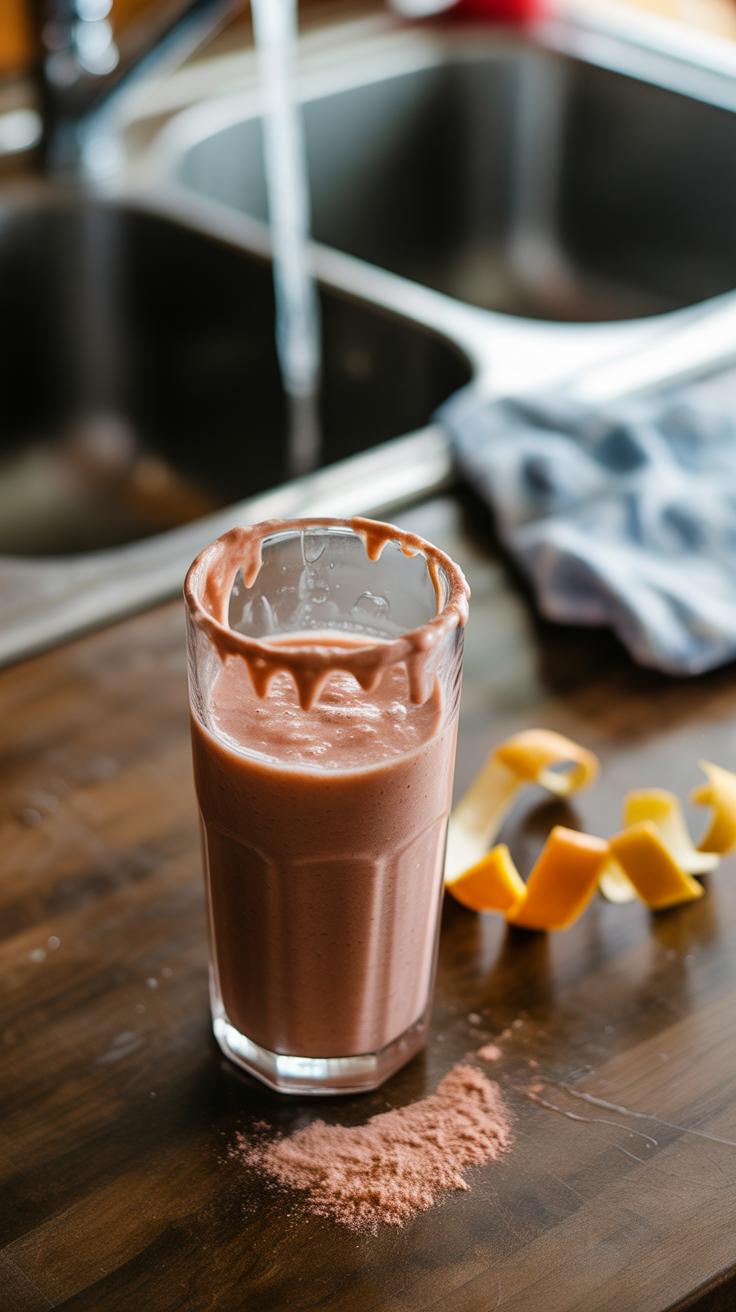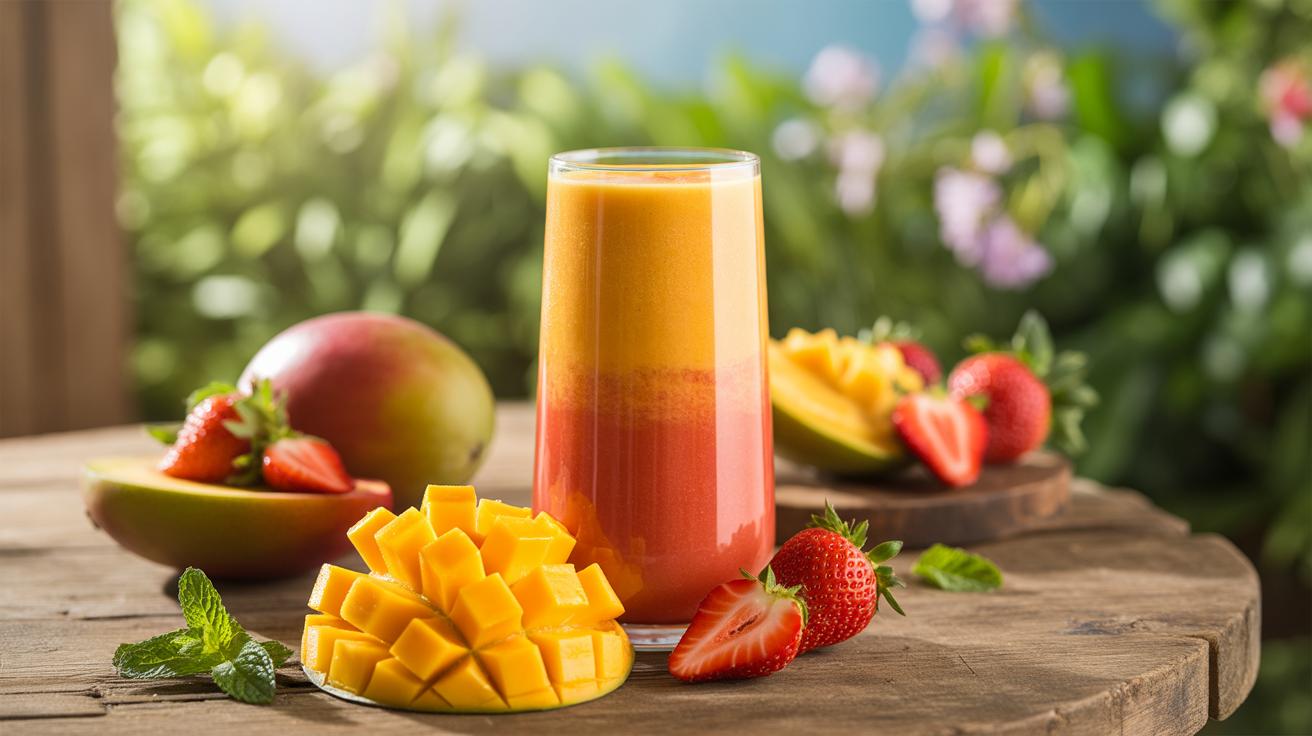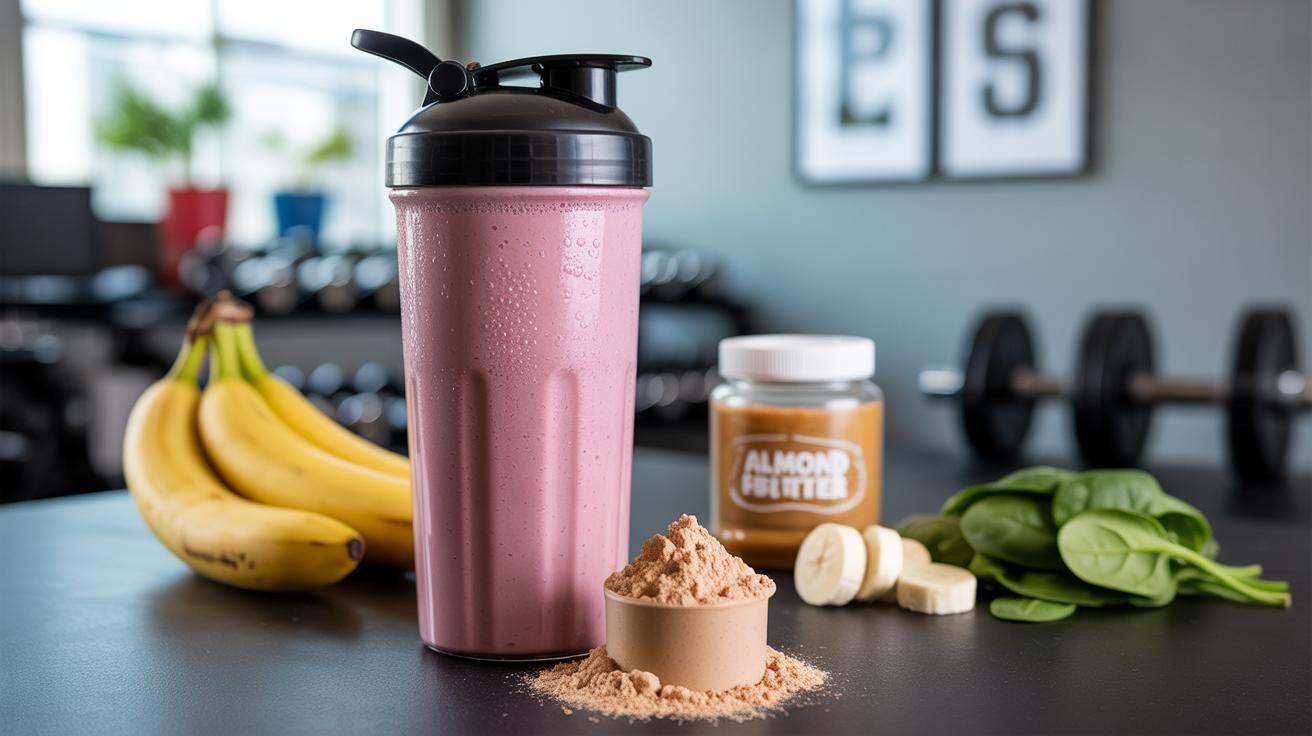Introduction
Breakfast is a key meal to start your day, and choosing the right foods can boost your energy and focus. Best Healthy Smoothies For Breakfast Energy offer a quick and easy way to get important nutrients without spending much time. You can blend fruits, vegetables, and proteins to create a tasty drink that keeps you energized for hours.
This article explores the benefits of breakfast smoothies and provides recipes and tips to make them a part of your daily routine. You will learn why smoothies are great for energy, how to pick the best ingredients, and ways to prepare them for a perfect start to your day.
Benefits of Starting Your Day with Smoothies
Breakfast often sets the tone for your entire day. Skipping it can leave you sluggish or unfocused, and sometimes, grabbing something quick turns into eating whatever’s at hand, which might not fuel you well. Smoothies, though, offer a smart alternative. They pack a punch of nutrition while being easy to prepare and consume. You might find that they save you time—no cooking, just blending and going.
What’s nice about smoothies is how flexible they are. You can tailor them to include whatever you need, whether it’s more protein, fiber, or vitamins. They rarely feel heavy, so your morning doesn’t get bogged down by digestion. If you’ve ever felt weighed down after a big breakfast, smoothies might be what you didn’t realize you needed.
Why Smoothies Work as a Breakfast
Smoothies blend liquids with fruits, vegetables, and proteins, creating something that’s both filling and gentle on your stomach. This combination helps jump-start digestion without causing discomfort or sluggishness. You don’t need to chew much, which might sound trivial but can be relaxing when your morning feels rushed.
Liquids like water, milk, or plant-based alternatives blend everything smoothly. Fruits and vegetables add natural sugars, fiber, and antioxidants. Then you add proteins like yogurt or nut butters for staying power. It’s a meal that doesn’t demand much effort to digest, yet it supports your body’s energy needs.
Energy and Nutrient Boost
Smoothies often bring together carbohydrates from fruits, proteins from dairy or plant sources, and often healthy fats if you include nuts or seeds. This mix provides a steady release of energy instead of a quick spike and crash. You get vitamins like C and K from leafy greens or citrus, minerals such as potassium or magnesium, and antioxidants that can help fight morning fatigue.
The carbohydrates give you quick energy, while proteins and fats help keep your energy more stable. Many people notice smoother energy curves when their breakfast includes all three. It makes sense; your body needs more than just sugar to keep moving forward through the morning.
Choosing the Right Ingredients for Energy
Picking ingredients for your morning smoothie isn’t just about taste. It’s about how well they keep you going throughout the day. You want steady energy, not those quick spikes and crashes that leave you tired halfway through.
Fruits and Vegetables
Fruits and veggies bring vitamins, fiber, and natural sugars that fuel your body gently. Think about berries like blueberries or strawberries—low in sugar but packed with antioxidants and fiber to slow digestion. Bananas add sweetness and potassium, which can help muscle function and keep your nerves firing.
Leafy greens such as spinach or kale are great too, even if their flavor is a bit strong at first. They fill you with minerals and fiber without extra calories. Carrots and cucumber might sound odd in smoothies, but their mild sweetness and hydration give you a fresh kick.
Proteins and Healthy Fats
Proteins and fats aren’t just fillers; they actually slow digestion and help avoid that hunger crash. If you’ve ever felt peckish an hour after a smoothie, it’s probably because you skipped this part.
Try adding Greek yogurt, protein powders (pea or whey), or nut butters. They thicken the smoothie and keep you full longer. Healthy fats from avocados, chia seeds, or flaxseeds are quietly powerful—they provide energy without overwhelming the stomach. And they support brain function, which matters when you need mental focus in the morning.
There’s a bit of trial and error in finding your balance. You might start thinking, should I add more protein or fats? It depends on your activity level and how hungry you get. But generally, a blend of greens, fruit, protein, and a fat source works pretty well for sustained energy.
Simple Smoothie Recipes to Try
Fruit and Greens Smoothie
Here’s a blend that’s both refreshing and grounding. You take a handful of spinach or kale—sometimes I switch between the two depending on what’s available—and add a banana for natural sweetness. Then, toss in half a cup of frozen mixed berries. These fruits add just enough tartness without overwhelming the greens.
To keep it smooth, pour in a cup of water or unsweetened almond milk. You might think the leafy greens would dominate the taste, but the fruit balances it nicely. If you want a little more texture or fiber, try adding some chia seeds; they don’t change the flavor much but do help keep you full.
This combo gives you a burst of vitamins and minerals, and the fiber keeps things steady energy-wise. It’s simple, doesn’t require exotic ingredients, and fits well on rushed mornings when you need something quick yet nourishing.
Protein Packed Smoothie
For those mornings when you feel like you’ll be running on empty by mid-morning, adding protein can really help. A good go-to starts with a base of plain Greek yogurt or a scoop of your favorite protein powder. Then, add a banana or half an avocado for creaminess and healthy fats.
Throw in some frozen berries or even a spoonful of peanut butter for flavor. You’ll want about a cup of milk or a milk alternative here to help everything blend smoothly. This one feels richer and more filling, which is probably why I reach for it on days packed with meetings.
It sustains your energy longer than just fruit alone. But, I sometimes wonder if it’s too heavy if I’m not very active afterward. Still, if you can balance it right, it can be a morning lifesaver with enough punch to keep you going well past lunch.
How to Prepare Your Smoothie for the Best Energy
Blending Tips
Start by layering your ingredients thoughtfully. Generally, put liquids at the bottom, soft fruits in the middle, and harder or leafy greens on top. This approach helps the blades move more freely and creates a smoother texture. It might seem a bit fussy, but it really cuts down on bits and chunks you don’t want to chew through.
Begin blending on a low speed—this gently breaks down the ingredients without heating them up too much, which can degrade some nutrients. Then, gradually increase speed to get that creamy finish. If you jump straight to high speed, your smoothie can heat up or become too frothy, and honestly, that’s not always the best for nutrient retention.
Ingredient Preparation
Preparing your ingredients in advance saves time and helps keep nutrients intact. Wash fruits and veggies thoroughly to remove dirt and residues, but don’t overdo it since water can leach some vitamins if left sitting too long. Chop ingredients into smaller, manageable pieces to ease blending. It’s a minor step, but when you’re rushing in the morning, every second counts.
Freezing fruits and some veggies is a smart move. Not only does it keep them fresh longer, but frozen items also add thickness and chill to your smoothie without extra ice. I occasionally wonder if freezing reduces some enzymes, but overall, it seems to lock in most nutrients well enough. Plus, no one wants a watery smoothie that’s all thawed out.
Balancing Taste and Nutrition in Smoothies
Making a smoothie that’s both appealing and healthy can feel tricky. Many people reach for extra sugars or flavored syrups to mask the natural bitterness of greens or the tartness of some fruits. Yet, it’s possible to keep your smoothie tasty without leaning on refined sugars or artificial ingredients. The key lies in thoughtful choices and a bit of experimenting.
Natural sweeteners offer a gentle way to boost flavor without losing health benefits. Options like ripe bananas, dates, or a small spoonful of pure maple syrup can add just enough sweetness. Even a splash of unsweetened vanilla almond milk or a hint of cinnamon may trick your taste buds into perceiving more sugar than is really there.
Mixing fruits and vegetables cleverly also helps balance flavors. Pairing sweeter options like mango or pineapple with greens such as spinach or kale offsets bitterness. Berries add a tart, fresh bite that’s often overlooked. Sometimes, a squeeze of lemon or lime brightens everything up without making it sour.
Have you ever wondered why some smoothie recipes taste like dessert while others are hard to finish? It usually comes down to these subtle blends of natural sweetness and flavor layering. It’s not about masking healthy ingredients but enhancing them in simple ways that invite you back the next morning.
Common Mistakes to Avoid When Making Breakfast Smoothies
When making breakfast smoothies, it’s easy to slip into some typical errors without realizing it. One of the biggest, I think, is adding too much sugar—often from fruit juices or sweeteners. It might seem like a quick fix to improve flavor, but this can cause a crash in your energy later on. Instead of pouring in that extra juice or honey, try using whole fruits like berries or a small piece of banana. They give natural sweetness and fiber, which slows sugar absorption.
Another common pitfall is missing protein or fiber. Smoothies without these can leave you hungry sooner, defeating their purpose as a sustaining breakfast. Including ingredients like Greek yogurt, nut butters, or even a scoop of protein powder can make a big difference. Fiber-rich additions such as oats or chia seeds also help keep you fuller longer. Skipping these means you might feel fine for a while but end up reaching for snacks too early—something I’ve definitely experienced myself.
It’s tempting to throw in whatever looks convenient, but choosing lower-nutrient fillers—flavored yogurts, sugary cereals, or too many dried fruits—can sabotage your smoothie’s benefits. Try sticking to simple, whole foods, and don’t be afraid to experiment a bit to find combinations that taste good without unnecessary extras. What’s your smoothie mistake that you keep repeating?
Incorporating Smoothies into Your Daily Routine
Making smoothies a regular part of your morning can feel a bit tricky at first. You might wonder if it’s too time-consuming, or if you’ll get bored with the same flavors day after day. But the truth is, with some simple habits, smoothies can fit into even the busiest mornings without much hassle.
Planning Ahead
One strategy that works well is prepping ingredients in advance. For example, chopping fruits and freezing them in single-serve bags can save precious minutes. You can even pre-portion nuts, seeds, or leafy greens. On weekends, I often blend a big batch of smoothie base, like a mix of spinach, banana, and almond milk, then freeze it in ice cube trays. On hectic mornings, I pop a few cubes in the blender, add fresh ingredients, and that’s it—breakfast’s ready.
Another tip: consider making entire smoothies the night before and refrigerating them. They don’t stay perfect forever, but most hold up well for a few hours, giving you a nutritious grab-and-go option. If mornings feel rushed, you won’t regret this small bit of prep.
Mixing Variety and Consistency
Finding a balance between variety and a steady nutrient base can be confusing. You want your smoothie palette to stay interesting but also packed with protein, fiber, and healthy fats. One easy approach is to rotate your core ingredients—maybe swap chia seeds for flaxseeds, or try Greek yogurt instead of protein powder. Keep a few favorite formulas you know fuel you well, then experiment with seasonal fruits or spices to keep things fresh.
Sometimes I feel like sticking to the same recipe is easier, but it does get dull. Switching up ingredients not only keeps boredom at bay but also broadens your nutrient spread. And remember, even small tweaks count—adding a dash of cinnamon or a slice of avocado can change flavor and fuel.
Tracking Your Energy and Adjusting Your Smoothies
Pay close attention to how your body reacts after breakfast. When you try a new smoothie, take note of your energy levels over the next few hours. Do you feel alert, sluggish, or somewhere in between? Sometimes, a smoothie loaded with fruits might spike your energy quickly but leave you crashing before noon. Other times, adding protein or healthy fats can keep you fuller longer but might slow digestion or make you feel a bit heavy.
Try keeping a simple journal to track what you drink and how you feel. Listening to your digestion is just as important—do you feel bloated, or is the smoothie easy on your stomach? These little observations help you tweak the ingredients in ways that suit your unique needs.
If you notice a dip in energy mid-morning, think about increasing fiber or protein. If you feel too full or sluggish, maybe cut back on nuts or seeds. Sometimes, swapping a sweet fruit for a less sugary one makes a difference. It’s okay if it takes time to find your ideal balance—your body’s response can vary day to day. This isn’t an exact science, but it’s worth experimenting with different combinations until you find what truly fuels your morning.
Conclusions
Healthy breakfast smoothies provide a simple way to fuel your body with energy and nutrients. They combine good ingredients like fruits, vegetables, and protein to keep you full and active. By making smoothies a part of your morning, you set a healthy tone for the day ahead.
Try different recipes and adjust the ingredients to fit your taste and needs. With the right choices, you can enjoy a fast, nutritious breakfast that helps you feel better and achieve your daily goals. Your body and mind will thank you.

